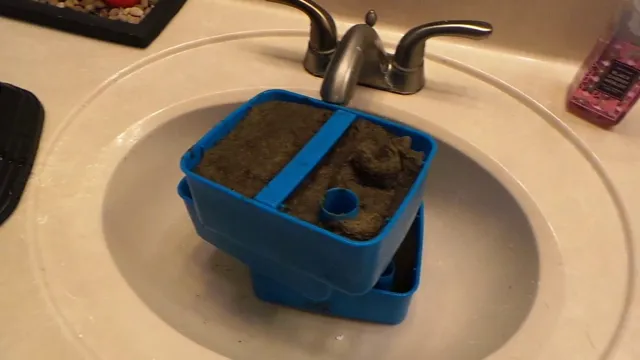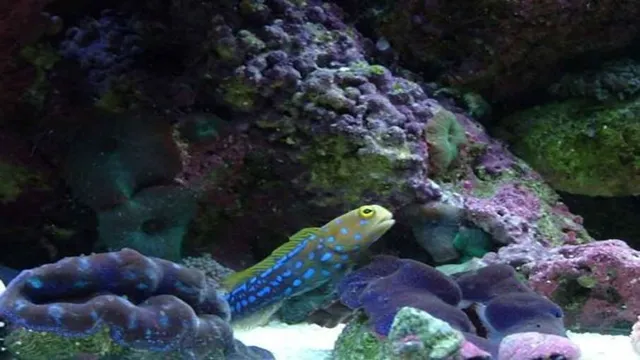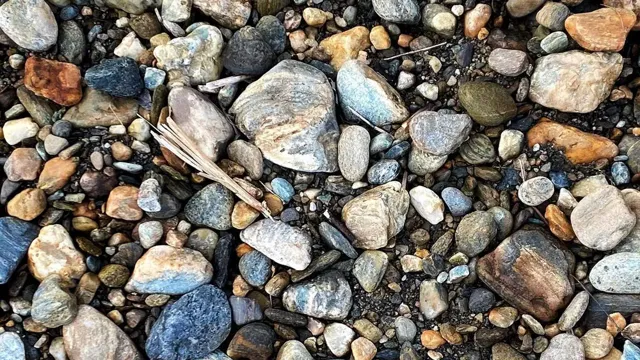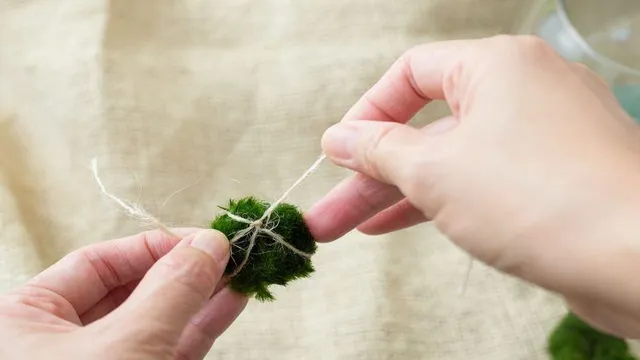How to Dose Aquarium Salt to Treat Fin Rot: A Complete Guide

Are your fish showing signs of fin rot? Worry not, as aquarium salt can be used to treat this common fish ailment! But how exactly do you dose aquarium salt for fin rot treatment? First and foremost, it’s important to note that not all fish species can tolerate salt in their water. So before administering any treatment, make sure to research if your fish species is salt-tolerant. Assuming that your fish can tolerate salt, the next step is to determine the appropriate dosage.
The general rule of thumb is to add 1 tablespoon of aquarium salt per 5 gallons of water. However, it’s best to follow the instructions provided by the salt manufacturer as different brands of aquarium salt may have varying recommended dosages. It’s also important to dissolve the salt completely in a container with aquarium water before adding the solution to the tank.
It’s also crucial to monitor the salt concentration in the tank as excessive salt can stress your fish and even cause harm. As such, make sure to perform frequent water changes and adjust the salinity levels as needed. Remember, just like with any treatment, consistency is key.
So stick to the recommended dosage and monitor your fish closely for any progress or adverse reactions. With proper treatment and care, your fish can recover from fin rot and swim happy and healthy again!
What is Fin Rot?
If you’re a fish owner, you may have heard of fin rot. It’s a common bacterial infection that affects the fins of fish, and it can cause the fins to deteriorate and become frayed or split. If left untreated, fin rot can lead to other health problems and even death for your fish.
One way to treat fin rot is by using aquarium salt. When used correctly, aquarium salt can reduce the bacteria on your fish and provide relief to the affected fins. So how do you dose aquarium salt to treat fin rot? First, remove any activated carbon from your filter.
Then dissolve 1 tablespoon of aquarium salt per gallon of water in a separate container of aquarium water. Make sure the salt is fully dissolved before adding it to the aquarium. Add the salt slowly over a period of 24 hours, and monitor your fish closely to make sure they don’t show signs of distress.
Keep in mind that some fish species are more sensitive to salt than others, so it’s important to research your specific fish species before using aquarium salt as a treatment. With proper usage, aquarium salt can be a useful tool in treating fin rot and keeping your fish healthy.
Symptoms
Fin Rot is a common bacterial infection among fish, especially those in aquariums. Its symptoms include frayed fins, discolored areas on the fins or body, and a general deterioration in overall health. The infection often starts when the fish’s immune system is weakened, as a result of poor water quality or stress.
Fin Rot can also be caused by parasites or physical injuries. If the disease is not treated, it can spread to other parts of the fish’s body, and even result in death. To prevent Fin Rot, aquarium owners should maintain high water quality and provide their fish with a healthy diet and stress-free environment.
Treatment options include antibiotics, and in severe cases, amputation of the affected fins. By staying vigilant and taking action quickly if symptoms arise, fish owners can help their pets recover from Fin Rot and enjoy long, healthy lives.
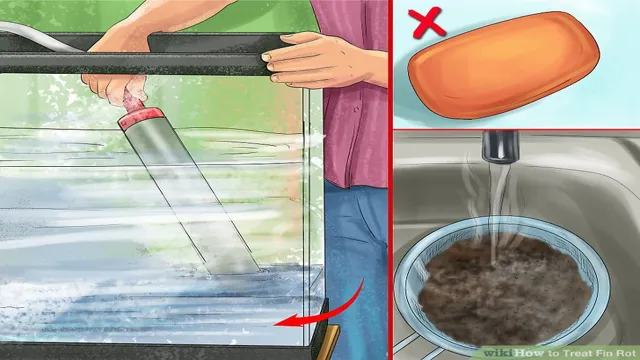
Causes
Fin Rot is a common disease in fish that can cause major damage to their fins and overall health. The main cause of Fin Rot is poor water quality, specifically when there are high levels of ammonia and nitrate in the water. These substances can create a perfect environment for bacteria to grow, leading to infected fins on the fish.
Additionally, overcrowding of fish in an aquarium can also lead to this disease, as it creates an environment where bacteria can spread easily. It is important to clean and maintain aquariums regularly, monitor water quality, and avoid overcrowding to prevent the onset of Fin Rot. By taking these steps, fish owners can help ensure the health and well-being of their aquatic pets.
Using Aquarium Salt to Treat Fin Rot
If your fish is suffering from fin rot, using aquarium salt can be an effective treatment method. However, it is important to know how to properly dose the salt to ensure the health and safety of your fish. The general rule is to use one tablespoon of aquarium salt per gallon of water. (See Also: Is London Aquarium Worth it? An In-Depth Review)
It’s important to note that not all salt is safe for fish, so make sure to use aquarium salt specifically designed for fish tanks. Start by adding a small amount of salt to your tank and gradually increase the dosage over a 24-hour period until you reach the appropriate amount. Be sure to closely monitor your fish’s behavior and discontinue use if they show any signs of distress.
With proper dosing and care, aquarium salt can help treat fin rot and keep your fish healthy.
Preparation and Dosage
Aquarium salt is an excellent treatment for fin rot in fish. To successfully use it, you need to prepare the correct dosage and follow the right procedures. First, you should only use aquarium salt that is specifically made for fish tanks.
You can find it in most pet stores. Secondly, you need to prepare a separate container of water that is free from chlorine and any other harmful chemicals. Then, add the appropriate amount of aquarium salt according to the instructions on the package.
Make sure the salt has dissolved entirely before adding it to your fish tank. Generally, you should add one tablespoon of salt for every five gallons of water. It is crucial to monitor your fish when you introduce the aquarium salt.
Fish can be sensitive to changes in their environment, and some species may not tolerate salt very well. If your fish begin to show any signs of distress, such as clamped fins, hanging at the bottom of the tank, or gasping for air, remove the salt immediately. When using aquarium salt to treat fin rot, you should keep the salt level at 0.
3%. You can achieve this by adding one tablespoon of salt for every five gallons of water and rechecking the salinity every day. If the level drops below 0.
3%, you need to add more salt. Once you have reached the desired level, keep the salt in the tank for at least five days. Once the treatment is complete, you should perform a water change to remove any excess salt from the tank.
Application
Aquarium salt is a popular and effective treatment for fin rot in fish. Fin rot is a bacterial infection that affects a fish’s fins and can be caused by poor water quality, overcrowding, or other stress factors. Aquarium salt helps to create a saline environment in the fish tank, which helps to kill off the bacteria causing the infection.
To use aquarium salt to treat fin rot, you should first remove any carbon filters in your aquarium, as they can absorb the salt and reduce its effectiveness. Next, you should dissolve the salt in a separate container of aquarium water before adding it to the tank. The dose of salt required will vary depending on the severity of the infection and the size of the tank, so be sure to follow the instructions carefully.
It’s important to note that aquarium salt can be harmful to some types of fish, including those who are sensitive to salt. If you’re unsure whether your fish can tolerate aquarium salt, it’s best to consult with a veterinarian or an experienced aquarium expert before using it. Overall, aquarium salt can be a safe and effective way to treat fin rot in your fish.
By following the proper dosing and monitoring your fish closely for any adverse reactions, you can help them recover from this common and often frustrating condition.
Duration of Treatment
When it comes to using aquarium salt to treat fin rot, the duration of treatment depends on the severity of the case. For mild cases, it usually takes about 5-7 days of salt baths to see improvement. For more severe cases, it may take up to 10-14 days of salt baths and regular water changes to fully treat the fin rot. (See Also: How to Clean Algae off Aquarium Heater: Tips and Tricks)
It’s important to note that aquarium salt should not be a long-term solution and should only be used as a temporary treatment. Overusing salt can lead to harm for fish and may affect the balance of the aquarium’s ecosystem. As with any treatment, it’s crucial to monitor the progress of the fish and seek veterinary advice if the fin rot persists or worsens.
Overall, aquarium salt can be an effective and affordable solution for treating fin rot, but it should be used with caution and only as a temporary solution.
Tips for Successful Treatment
If you’re dealing with fin rot in your aquarium, using aquarium salt is often a recommended treatment. However, dosing it correctly is crucial for successful treatment. First, make sure to remove any activated charcoal in your filter as it can absorb the salt and render it ineffective.
To start, add one tablespoon of aquarium salt for every five gallons of water in your tank. Dissolve the salt in a separate container of tank water before adding it in. Repeat this process every 12 hours for three to five days.
It’s important not to continue the treatment for too long as prolonged exposure to salt can harm your fish. Additionally, regular water changes should be done to maintain good water quality and prevent any harm to sensitive fish. By following these tips for dosing aquarium salt, you can effectively treat fin rot in your aquarium and keep your fish healthy.
Maintaining Water Quality
Maintaining water quality is essential for safe and healthy living. To ensure your water stays clean and free from harmful contaminants, there are a few steps you can follow. One of the most important things you can do is to regularly test your water quality.
This can be done through home testing kits or by hiring a professional. Knowing the specific contaminants in your water will guide you in the appropriate treatment. Additionally, investing in a water filter can help to remove contaminants and provide you with clean water.
Remember to change the filter regularly, as a dirty filter can cause more harm than good. Finally, be mindful of what you put down your drains. Chemicals, fertilizers, and other pollutants can seep into groundwater, negatively affecting your water supply.
Be sure to dispose of these items properly and consider more environmentally-friendly alternatives. By consistently testing, filtering, and being mindful of your water use, you can maintain high-quality water in your home and community.
Monitoring Fish Behavior and Recovery
When it comes to monitoring fish behavior and recovery after treatment, there are a few important tips to keep in mind. Firstly, it’s essential to carefully observe the fish on a regular basis, looking for any abnormal behavior or signs of illness. This could include changes in swimming patterns, lack of appetite, lethargy, or abnormal coloration.
Secondly, it’s crucial to maintain water quality and ensure that the fish are living in a healthy environment. This involves keeping a close eye on water temperature, pH levels, and oxygen levels. Additionally, providing an appropriate diet and minimizing stressors is important for helping with recovery.
By following these tips and monitoring fish behavior closely, you can help ensure successful treatment and a full recovery. (See Also: How to Make a Shoe Box Aquarium – Quick & Easy DIY Guide)
When to Seek Professional Help
If you notice signs of fin rot in your aquarium fish, it’s important to take action promptly. Aquarium salt is a common treatment for fin rot, but it’s crucial to dose it correctly to avoid further harm to your aquatic pets. Firstly, it’s essential to determine the severity of the issue; for mild cases, half a teaspoon of salt per gallon of water is sufficient, while for more moderate cases, you will need to increase the dosage to one teaspoon per gallon of water.
Before adding the salt to your tank, it’s crucial to dissolve it in a separate container of water first. When adding the salt, make sure to do so gradually to avoid shocking your fish’s system and keep a close eye on your pets throughout the treatment. If you are unsure about the right dosage or how to administer aquarium salt, it’s always best to seek professional help from an experienced fish-care provider or veterinarian.
Conclusion
So, there you have it folks! Treating fin rot with aquarium salt isn’t rocket science, but it does require a bit of finesse. Remember to assess your fish’s needs carefully, adapt the dose accordingly, and monitor your buddy’s progress like a hawk. And, of course, avoid playing soccer with the little container of salt – your fish won’t appreciate the extra seasoning, no matter how funny it seems!”
FAQs
What is aquarium salt and how does it treat fin rot?
Aquarium salt is a form of sodium chloride that is used in fish tanks to treat diseases like fin rot. It works by reducing stress and improving osmoregulation in fish, which can help them recover from illness.
How much aquarium salt should I use to treat fin rot?
The recommended dosage of aquarium salt for treating fin rot is 1 tablespoon per 5 gallons of water. It’s important not to use too much salt, as this can be harmful to fish and other aquatic animals.
Can aquarium salt be used to prevent fin rot?
Yes, adding a small amount of aquarium salt to your fish tank can help prevent fin rot and other diseases. However, it’s important not to use too much salt, as this can have negative effects on your fish and other aquatic animals.
How long does it take for aquarium salt to treat fin rot?
The amount of time it takes for aquarium salt to treat fin rot can vary depending on the severity of the infection and the health of the fish. However, most fish will start to show improvement within a few days of treatment.
Should I remove my fish from the tank while using aquarium salt?
It’s generally not necessary to remove your fish from the tank while using aquarium salt to treat fin rot. However, if your fish are showing signs of distress or discomfort, you may want to consider lowering the dosage or removing them from the tank temporarily.
Are there any side effects to using aquarium salt?
While aquarium salt is generally safe for use in fish tanks, it can have some negative effects if used improperly. Too much salt can harm sensitive fish, plants, and other aquatic animals, and may also lead to the development of resistant strains of bacteria.
Can I use table salt or sea salt instead of aquarium salt to treat fin rot?
No, it’s not recommended to use table salt or sea salt to treat fin rot or other aquarium diseases. These forms of salt contain additional chemicals and minerals that can be harmful to fish and other aquatic animals, and may also affect the pH and water chemistry of your tank.


